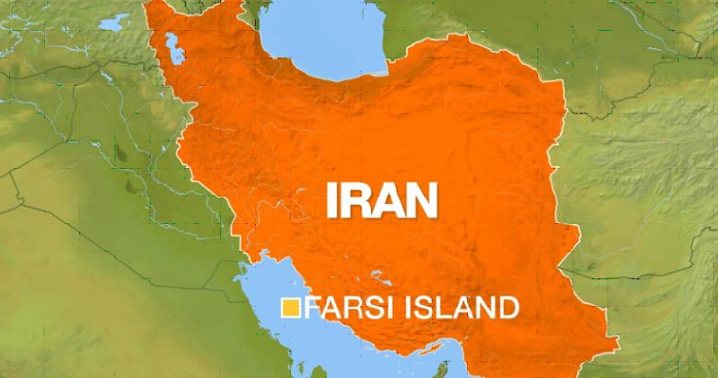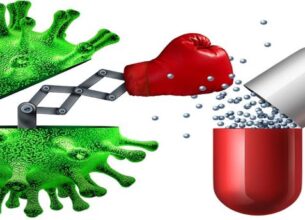Prelim Snippets 07-08-2019
PATTAMADAI SILK MAT
Context: The Geographical Indications Registry has granted the Geographical Indication (GI) tag to Pathamadai Silk Mat
About:
- Pattamaadai mats are silk mats also called Pattu paai that originated in a small village in Tirunelveli district of Tamil Nadu.
- The art and craft of weaving and blending intricate designs of Pattamadai mats are considered unique to this region.
- Made of a special kind of grass called “Korai/Gorai“- it is also called is also called Korai or Gorai paai.
- The conventional method of mat making is a lengthy process of drying, soaking, splitting and dyeing the grass.
- Pattamadai paais are made specially for wedding ceremonies. It is a token for making the occasion memorable and has the bride and the groom’s names as well as the wedding date woven in it.
- The traditional colours used are red, green and black and the weaves range from medium colour to 140 counts in the silk or pattu mat.
- The old pattern consists mainly of stripes at the two ends or streaks through the body.
- Design inputs by modern designers have led to the making of more contemporary mats which are greatly in demand both in the international and national markets.
- Today, apart from the sophisticated Pattamdai pai (mat), Pattamadai weavers also craft korai grass shopping bags, place mats, runners, office folders and other items.
- Today the traditional weaving process faces a tough competition from increased domestic and international demand and supply imbalance which has led to increased use of synthetic dyes, lesser focus on benefits for the weaver and a shorter production period. With plastic mats entering into the market, silk mat industry is slowly on the decline.
CYBER HYGIENE
Context: The Monetary Authority of Singapore (MAS) has recently come up with new cyber hygiene rules for all financial services and e-payment firms.
About Cyber Hygiene:
- Cyber hygiene relates to the practices and precautions users take with the aim of keeping sensitive data organized, safe, and secure from theft and outside attacks.
- It is a reference to the practices and steps that users of computers and other devices take to maintain system health and improve online security.
- These practices are often part of a routine to ensure the safety of identity and other details that could be stolen or corrupted.
- Much like physical hygiene, cyber hygiene is regularly conducted to ward off natural deterioration and common threats.
AUSTRALIAN HAY FEVER
- Australian Hay Fever, also known as Allergic rhinitis, is one of the most common allergic disorder affecting one in every five people in Australia and New Zealand.
- Despite its given name, allergic rhinitis is neither caused by hay or result in a fever.
- It usually occurs after the nose or eyes of a person comes in contact with environmental allergens, such as pollens, dust mite, moulds and animal hair. Pollens from grasses are also amongst the most common causes.
- The allergic conditions can result in a significant impact on sleep, concentration, learning and daily function.
- Its immediate symptoms include runny nose, sneezing, watery eyes, snoring, fatigue, headache and throat infection.
- Australian Hay Fever is commonly treated through medications that include antihistamines, decongestants, nasal sprays and Bronchodilators.
- The disorder most commonly affects people between 20-40 years of age.
MEASLES
Context: A massive measles outbreak has been reported in Democratic Republic of the Congo (DRC)
About Measles:
- Measles is a highly infectious illness caused by the rubeola virus.
- Measles is transmitted via droplets from the nose, mouth or throat of infected persons.
- Initial symptoms, which usually appear 10–12 days after infection, include high fever, a runny nose, bloodshot eyes, and tiny white spots on the inside of the mouth.
- Several days later, a rash develops, starting on the face and upper neck and gradually spreading downwards.
- Severe measles is more likely among poorly nourished young children, especially those with insufficient vitamin A, or whose immune systems have been weakened by HIV/AIDS or other diseases.
- The most serious complications include blindness, encephalitis (an infection that causes brain swelling), severe diarrhoea and related dehydration, and severe respiratory infections such as pneumonia.
- WHO recommends reaching all children with 2 doses of measles vaccine, either alone, or in a measles-rubella (MR), measles-mumps-rubella (MMR), or measles-mumps-rubella-varicella (MMRV) combination.
VALKYRIE: NASA’S ROBOT

- Valkyrie is a semi-autonomous robot designed to operate in hostile environments has been developed by NASA.
- The robot is able to use human tools and can plot its own path safely across difficult terrain to a location picked by its operator.
- NASA hopes the robot might one day help build colonies on the Moon or Mars, but it could also be used on Earth in places which cannot be reached by humans.
FARSI ISLAND

Context: Iran Revolutionary Guards Corps (IRGC) had seizes the fuel smuggling foreign tanker near Farsi Island in the Persian Gulf.
- Farsi Island is a tiny, barren Iranian island in the Persian Gulf.
- There is an IRGC Navy base on this island. The island has an area of about 0.25 km2 (0.10 sq. mi) and is restricted from the public.
- The word Farsi means “Persian”.
- In the late 1980s, during the “Tanker War” phase of the Iran–Iraq War, the IRGC used speedboats to launch attacks from Farsi Island on vessels of Iraq and its allies, including Kuwait.
CHANGPA TRIBAL COMMUNITIES
Context: GI Tag certification for Pashmina wool produced
- The Changpa or Champa are a semi-nomadic Tibetan people found mainly in the Changtang in Ladakh and in Jammu and Kashmir.
- A smaller number resides in the western regions of the Tibet Autonomous Region and were partially relocated for the establishment of the Changtang Nature Reserve.
- As of 1989 there were half a million nomads living in the Changtang area.
- The homeland of the Changpa is a high-altitude plateau known as the Changtang, which forms a portion of western and northern Tibet extending into southeastern Ladakh, and Changpa means “northerners” in Tibetan.
- Unlike many other nomadic groups in Tibet, the Changpa are not under pressure from settled farmers as the vast majority of land they inhabit is too inhospitable for farming.
- Most of the Tibetan Changtang is now protected nature reserves consisting of the Changtang Nature Reserve, the second-largest nature reserve in the world, and four new adjoining smaller reserves totalling 496,000 km2 (191,507 sq. miles) of connected Nature Reserves, which represents an area almost as large as Spain, and bigger than 197 countries.
- Since the reserves have been established there has been a welcome increase in the numbers of endangered species.
- The protected areas stretch across parts of the Tibet Autonomous Region, Xinjiang and Qinghai in China.
GODAVARI RIVER

Context: Godavari River raised above danger level in the recent spat of rains in Nashik district of Maharashtra.
- The Godavari with a length of 1,465 km. is the largest river system of the Peninsular India and is revered as Dakshina Ganga.
- It is an east flowing river and drains into the Bay of Bengal
- The Godavari basin extends over states of Maharashtra, Andhra Pradesh, Chhattisgarh and Odisha in addition to smaller parts in Madhya Pradesh, Karnataka and Union territory of Puducherry (Yanam) having a total area of ~ 3 lakh Sq.km.
- The basin is bounded by Satmala hills, the Ajanta range and the Mahadeo hills on the north, by the Eastern Ghats on the south and the east and by the Western Ghats on the west.
- The Godavari River rises from Trimbakeshwar in the Nashik district of Maharashtra about 80 km from the Arabian Sea at an elevation of 1,067 m.
- The river is also known as Dakshin Ganga and Gautami.
Tributaries of Godavari:
- The left bank tributaries are more in number and larger in size than the right bank tributaries.
- The Manjra (724 km) is the only important right bank tributary. It joins the Godavari after passing through the Nizam Sagar.
- Dharna, Penganga, Wainganga, Wardha, Pranahita [conveying the combined waters of Penganga, the Wardha and Wainganga], Pench, Kanhan, Sabari, Indravati etc. are some of its Left Bank Tributaries
- Pravara, Mula, Manjra, Peddavagu, Maner etc. its Right Bank Tributaries
- Below Rajahmundry, the river divides itself into two main streams, the Gautami Godavari on the east and the Vashishta Godavari on the west and forms a large delta before it pours into the Bay of Bengal.
NATIONAL HANDLOOM DAY
Context: The 5th National Handloom Day is being celebrated today (7th August, 2019) across the country. A function was held at VigyanBhawan in New Delhi to mark the occasion.
Significance:
- The main event will be held in Bhubaneswar, Odisha. Bhubaneswar has been chosen as the venue for the main event due to its rich tradition of Handlooms.
- More than fifty percent of total weavers’ population of India resides in Eastern and North Eastern Regions and most of them are women.
- The prime objective of holding the National Handloom Day in Bhubaneswar is to empower women and girls.
- National Handloom Day seeks to focus on the contribution of handloom to the socio-economic development of the country and also increase the income of weavers.
- August 7 was chosen as the National Handloom Day to commemorate the Swadeshi Movement which was launched on this day in 1905 in Calcutta Town Hall to protest against the partition of Bengal by the British Government.
- The movement had aimed at reviving domestic products and production processes.








